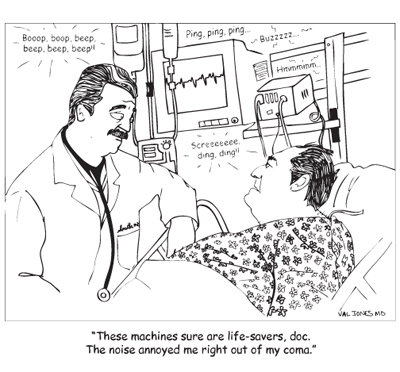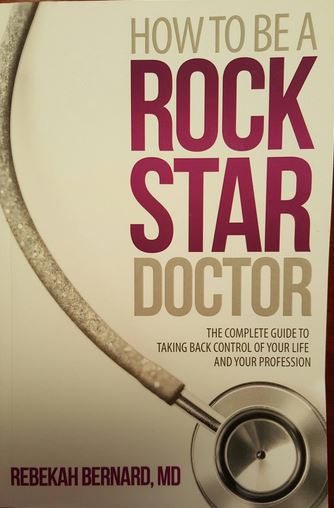July 28th, 2011 by John Mandrola, M.D. in Opinion
No Comments »

Today I would like to say thanks to a group of colleagues that too often go un-thanked.
These would be my hospital-based internal medicine friends: hospitalists are what they are called.
This idea came to me after reading Dr Robert Centor’s post on KevinMD. In his usual concise manner, he laments the lack of respect that many sub-specialists show hospitalists.
I feel differently about my hard-working colleagues.
As a sub, sub-specialist who works primarily in the hospital, I would like to say how grateful I am to have knowledgeable, hospital-based internists available.
I believe, and write frequently about the importance of seeing the forest through the trees. A good doctor must see the big picture: a little atrial fib, for instance, isn’t a major problem if you can’t move, eat or have widespread Cancer.
But for good patient care, the details are important too. Hospitalists are good at details. In fact, Read more »
*This blog post was originally published at Dr John M*
June 20th, 2011 by DrRich in Opinion, Research
No Comments »

In 2007, when the results were published from the COURAGE trial, all the experts agreed that this study would fundamentally change the way cardiologists managed patients with stable coronary artery disease (CAD).*
____
*”Stable” CAD simply means that a patient with CAD is not suffering from one of the acute coronary syndromes – ACS, an acute heart attack or unstable angina. At any given time, the large majority of patients with CAD are in a stable condition.
____
But a new study tells us that hasn’t happened. The COURAGE trial has barely budged the way cardiologists treat patients with stable CAD.
Lots of people want to know why. As usual, DrRich is here to help.
The COURAGE trial compared the use of stents vs. drug therapy in patients with stable CAD. Over twenty-two hundred patients were randomized to receive either optimal drug therapy, or optimal drug therapy plus the insertion of stents. Patients were then followed for up to 7 years. Much to the surprise (and consternation) of the world’s cardiologists, there was no significant difference in the incidence of subsequent heart attack or death between the two groups. The addition of stents to optimal drug therapy made no difference in outcomes.
This, decidedly, was a result which was at variance with the Standard Operating Procedure of your average American cardiologist, whose scholarly analysis of the proper treatment of CAD has always distilled down to: “Blockage? Stent!”
But after spending some time trying unsuccessfully to explain away these results, even cardiologists finally had to admit that the COURAGE trial was legitimate, and that it was a game changer. (And to drive the point home, the results of COURAGE have since been reproduced in the BARI-2D trial.) Like it or not, drug therapy ought to be the default treatment for patients with stable CAD, and stents should be used only when drug therapy fails to adequately control symptoms.
When the COURAGE results were initially published they made a huge splash among not only cardiologists, but also the public in general. So cardiologists did not have the luxury of hiding behind (as doctors so often do when a study comes out the “wrong” way) the usual, relative obscurity of most clinical trials. Given the widespread publicity the study generated, it seemed inconceivable that the cardiology community could ignore these results and get away with it.
But a new study, published just last month in JAMA, reveals that ignore COURAGE they have. Read more »
*This blog post was originally published at The Covert Rationing Blog*
October 15th, 2010 by Happy Hospitalist in Better Health Network, Health Policy, Opinion, True Stories
No Comments »

I read this article about a young child with heterotaxy syndrome with great interest. Not because I find heterotaxy syndrome something of great fascination, but because of the lack of communication — on both ends of the spectrum:
Even though 5 other Dr. all came in and listened to his lungs and said that he didn’t sound like he was wheezing and that his lungs sounded really good. But because this hospital is overly political, process driven, bureaucratic, and in a constant state of litigious fear they are unable to make any conclusions based on actual medicine and patient care. Common sense is blown out the window when you have a system were a hospitalist one year out of medical school has an opinion that is as valuable as a cardiologist with 25+ years experience.
But in fairness, they all had to “really consider her opinion.”
So they went and got a pulmonologist to evaluate him, which Scott and I were very happy about because there was nothing in the world that would’ve made me more happy in that moment than to have her proven wrong. Which she was.
The whole article is a case study in stress, distrust, and legalism. Read more »
*This blog post was originally published at The Happy Hospitalist*
July 23rd, 2010 by DrWes in Better Health Network, Humor, Opinion
No Comments »

All it takes to assure you’ll keep your local cardiologist employed is 19 strips of bacon and an egg and you’ve got yourself one heck of a solid bacon burger:
Having read about the difficulties people making such burgers have had keeping them together, I decided to add one large egg to the food processor along with the 19 slices of bacon. I ground the bacon and the egg together, then, using my hands, pulled the mixture out and used a hamburger press to make a burger. It is possible that my hands have been greasier at some point in my life, but if so I have (fortunately) forgotten it. I was not quite prepared for the raw burger to look like pure fat, and I must admit that it didn’t look very appealing. But it was for science, so I soldiered on!
I put the burger on the rack-Pyrex assembly and slid it under the broiler. Having learned a lesson from last week, I turned the stove exhaust fan to high immediately. I peeked in on it as it cooked, and it seemed to be cooking nicely, with tons of little fat bubbles sizzling on top. After seven minutes or so, I took it out to turn it over, and was pleased how easily it flipped. Five minutes later, it looked done, so I took the temperature of the inside (you need to be careful with pork, of course), and it registered at 160 degrees Fahrenheit, so out it came. Now it looked like food, and smelled delicious.
My family and I thank you, America!
-WesMusings of a cardiologist and cardiac electrophysiologist.
*This blog post was originally published at Dr. Wes*














